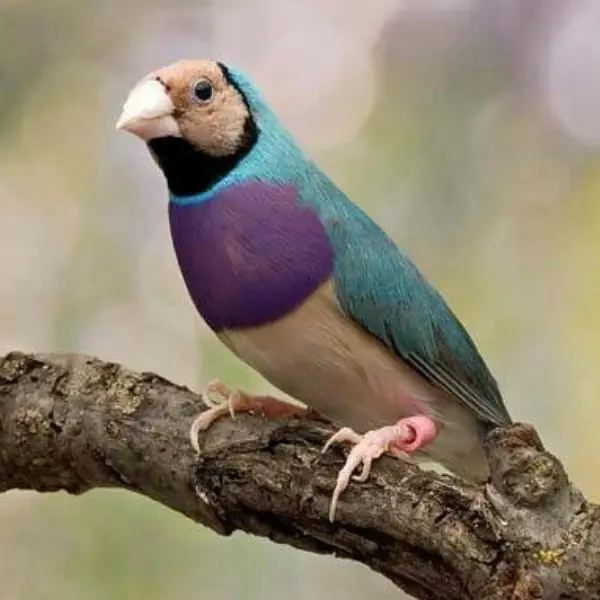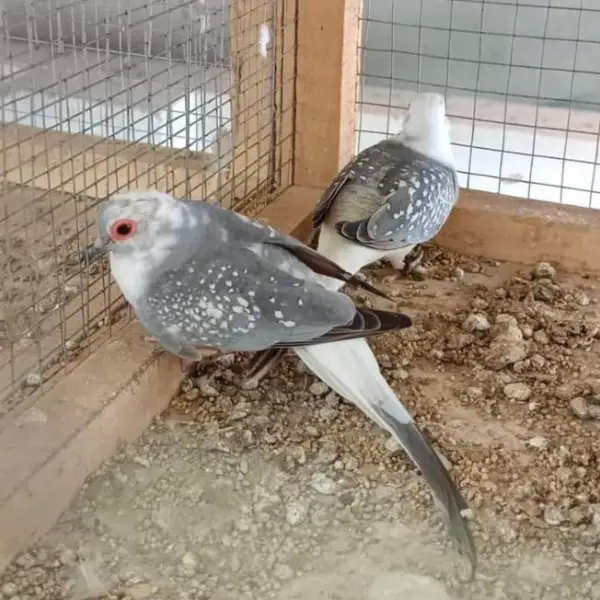Free shipping order over 20,000
Silver Jawa
₨ 6,250 Original price was: ₨ 6,250.₨ 5,000Current price is: ₨ 5,000.
-
-
-
-
- Scientific Name: Padda oryzivora
- Size: Approximately 13-15 cm (5-6 inches) in length.
- Color: The Silver Jawa features a sleek, silvery-gray plumage. The body is primarily a light gray or silver tone, with a slightly darker hue on the wings and back. The face is marked with the classic white cheek patches, creating a striking contrast with the silver feathers. The underparts are usually a lighter shade of gray or even off-white, blending seamlessly with the rest of the body.
- Beak: The beak is conical, strong, and typically pinkish or reddish in color, well-adapted for seed eating.
- Eyes: The eyes are dark, often appearing black, standing out against the silver and white coloration of the face.
- Legs and Feet: Legs and feet are pale pink or flesh-colored.
-
-
-
SKU: REF. LA-5766-9-1-1-1-1-1-1-1-1-1-1-1-1-1-1-1-1-1-1-1-1-1-1
Categories: JAWA FINCH, Uncategorized
Tag: jawa finch
Share
Share on facebook
Share on email
Important Keys:
Habitat
- Distribution: Originally native to the islands of Java, Bali, and Bawean in Indonesia, but widely distributed across various regions due to their popularity in aviculture. They have been introduced to parts of Southeast Asia, the Pacific Islands, and even Hawaii.
- Environment: In the wild, they prefer open grasslands, rice fields, and agricultural areas. In captivity, they do well in aviaries or spacious cages with plenty of room for flying and socializing.
Diet
- Primary Food: The Silver Jawa primarily consumes seeds, especially those from grasses and cereals. In captivity, a seed mix with millet as the staple is commonly provided.
- Supplementary Food: Fresh fruits, vegetables, and occasional protein sources like insects or egg food are important for a balanced diet, especially during breeding.
- Feeding Behavior: These birds are ground feeders, typically foraging for seeds on the ground. In captivity, they are usually fed from dishes or by scattering seeds on the floor of their enclosure.
Breeding
- Breeding Season: In the wild, breeding is often timed with the wet season when food is more abundant. In captivity, they can breed year-round if the conditions are right.
- Nest Location: They build nests in tree hollows, crevices, or dense vegetation. In captivity, they will use nest boxes lined with soft materials such as coconut fibers, grasses, or soft feathers.
- Egg Quantity: Clutches generally consist of 4-6 eggs.
- Incubation Period: The eggs are incubated for about 12-15 days, with both parents sharing the responsibility.
- Fledging: Chicks typically fledge around 21-25 days after hatching and become fully independent a few weeks later.
Lifespan
- In the Wild: Typically around 5-7 years.
- In Captivity: With proper care, the Silver Jawa can live up to 8-12 years or more.
Behavior
- Social Structure: Java Sparrows, including the Silver variety, are social birds that thrive in groups. They are often kept in pairs or small colonies in captivity. While generally peaceful, they may exhibit some territorial behavior during the breeding season.
- Vocalization: The Silver Jawa produces a soft, melodic chirping. Their song is rhythmic and used in social interactions, as well as during courtship displays.
![]()
Be the first to review “Silver Jawa” Cancel reply
Related Products
-
-22%
Strawberry Finch
₨ 4,500Original price was: ₨ 4,500.₨ 3,500Current price is: ₨ 3,500. -
-14%
Green Star Finch
₨ 17,500Original price was: ₨ 17,500.₨ 15,000Current price is: ₨ 15,000. -
-13%
Blue Star Finch
₨ 23,000Original price was: ₨ 23,000.₨ 20,000Current price is: ₨ 20,000. -
-25%
Silver Gouldian Finch
₨ 24,000Original price was: ₨ 24,000.₨ 18,000Current price is: ₨ 18,000. -
-43%
Blue Gouldian Finch
₨ 35,000Original price was: ₨ 35,000.₨ 20,000Current price is: ₨ 20,000. -
-13%
Gray Diamond Firetail Finch
₨ 23,000Original price was: ₨ 23,000.₨ 20,000Current price is: ₨ 20,000. -
-42%
Silver Pied Dove
₨ 12,000Original price was: ₨ 12,000.₨ 7,000Current price is: ₨ 7,000.
Sign Up for Exclusive Birds Care Tips and Offers from Phool Panchi
Company links
Category
Contact
© 2024 Phool Panchi | Developed By v3Studio
















Reviews
There are no reviews yet.